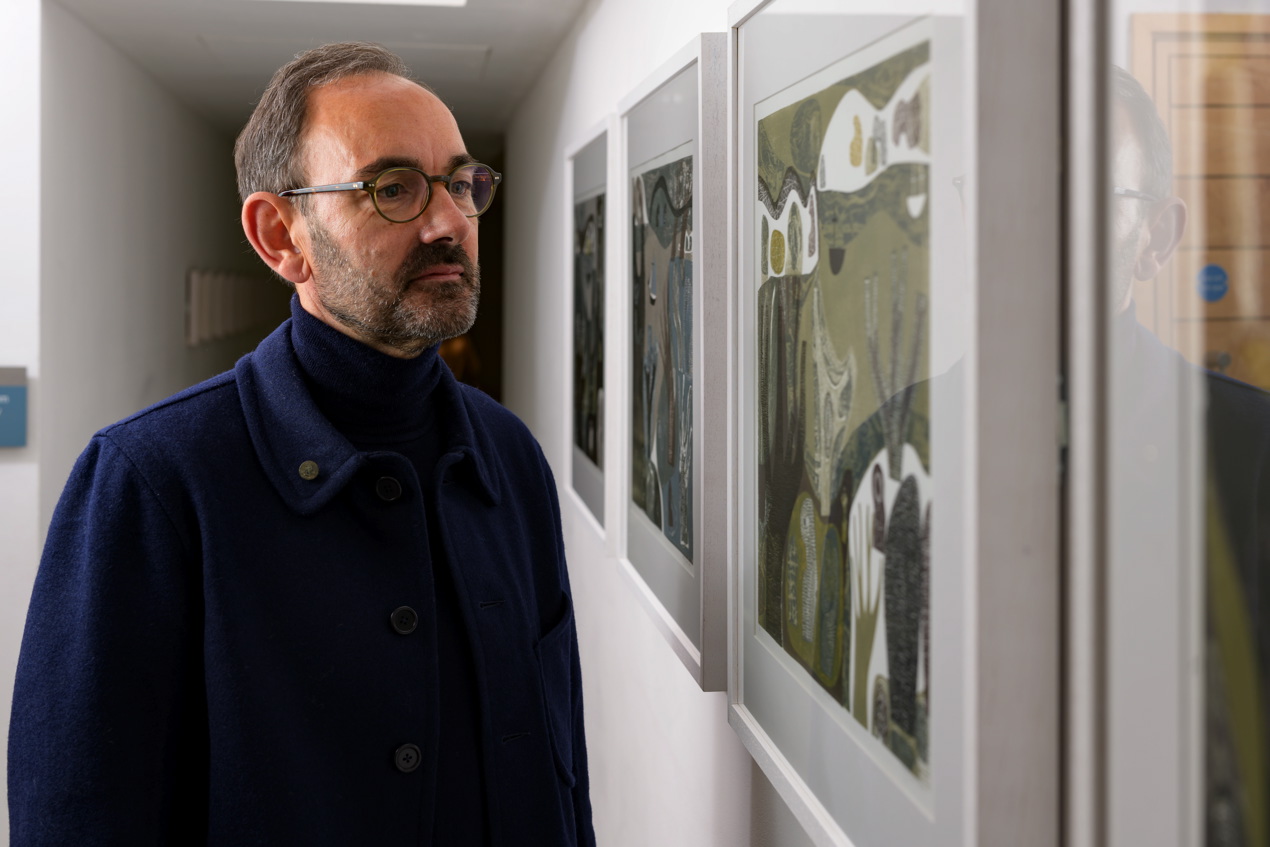Melvyn Evans: Imprinting the Land
Melvyn Evans’s distinctive linocuts and landscape paintings are both modern and timeless
If there’s one thing the work of Melvyn Evans conveys it’s his love for the British countryside. Through the considered use of colour and shape, his paintings and lino prints embody a sense of place while exploring the bond between human endeavour and the landscape’s dramatic, natural backdrop.
“My father was in the Navy so we spent a lot of time close to the sea when I was growing up and, as children, we were left to our own devices to wander and explore freely,” says Evans, explaining where his connection with nature originated. “Then when my father came out of the Navy he bought a hill farm in Wales and through that I got a real feel for the countryside.”
His latest exhibition, Imprinting the Land, will examine the symbiotic relationship man has with his surroundings. Focusing in particular on what Evans describes as “how we have left a mark on nature,” the collection of lino prints, drawings and paintings depicts paths, hedgerows, harbours, landmarks, monuments and stone boundary markers. A series of works also focuses on the fossilised remains of the Doggerland causeway, which ran between the east coast of England and continental Europe during the last ice age.
“Features like standing stones and cup and ring marks fascinate me – these prehistoric remains which have been left behind and let us know how the land was used,” he says, speaking from his base in Sevenoaks. “Over millennia people have left impressions on the landscape, these physical marks, and that also references back to the techniques I use when making prints – the process of marking and layering.”
Obviously the method of producing prints from linocuts prevents Evans from working in the field. And although he will often sketch and take photographs outdoors, much of his finished work is a product of mental recall and, at times, pure imagination.
“When I’m back in the studio I work mainly from memory, maybe shift things around a bit, change what I’ve seen so that my prints relate to reality but aren’t too specific, are more abstracted, more stylised,” he explains. “Photographs are just too static. Using imagination I can move headlands or houses, lower or raise horizons.”
The influence of the St Ives School of artists – who emerged from the Cornish fishing port during the mid-20th century with bold, often abstract seascapes – is acknowledged by Evans, alongside that of William Scott and sculptors Barbara Hepworth and Henry Moore. However, his work remains distinctive.
“I like to think that over time I’ve developed a particular style,” Evans says. “I have a particular vocabulary that allows me to artistically realise ideas I have.”
And there’s a timeless quality to his work. Many of the pieces to be exhibited at Yorkshire Sculpture Park could be portraying scenes from several hundred years ago or yesterday. Indeed, he claims to be “not interested in trends or depicting specific times or events”.
“Most of my prints are on the verge of being abstract,” Evans concludes. “And I want the viewer to see past what we normally consider landscapes to be. This exhibition really illustrates our connection to the land and the sea, how working the land has left marks and symbols reconnecting us all to the past.”
Melvyn Evans: Imprinting the Land, Yorkshire Sculpture Park 16 Nov-23 Feb 2020

Leave a reply
Your email address will not be published.